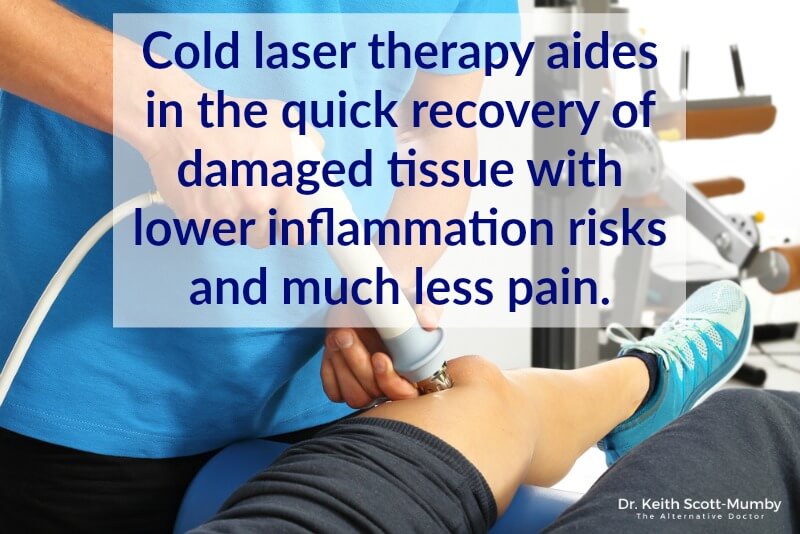Using cold laser therapy for pain sounds like something out of science fiction! You might be shocked to know it has been used successfully to treat chronic pain and heal wounds for the past decade.
It isn’t “new” science, however. In the past forty years, there have been more than 2,500 studies done on the use and effectiveness of cold laser therapy.
As I mentioned in my article about intranasal phototherapy, we are made of light and energy. It makes sense that light and energy can help us to heal.
What is Cold Laser Therapy?
Light Amplification through Stimulated Emission of Radiation (LASER) was a theory conceived by Albert Einstein in 1916. Fifty years later, it was used in medical application by Professor Andre Mester. It has been utilized in the treatment of various conditions in patients worldwide since Dr. Mester’s first successful attempt in 1967.
In 2002, the United States Food and Drug Administration (FDA) approved cold laser therapy for the use of treating chronic pain. Cold laser therapy is also called Low Level Laser Therapy (LLLT) where wavelengths of light are focused on damaged tissue.
LLLT can accelerate healing and ease discomfort of acute and chronic pain conditions by lowering swelling, calming the muscles, and improving mobility. It is an alternative, non-invasive treatment that does not require surgery or drugs. It can be used safely alongside other pain management techniques with rare side effects reported (comparable to placebo use).

How Does It Work?
A cold laser therapy device is approximately the size of a flashlight and is held in the hand of the technician. It is placed directly over the wound or source of pain.
Photons of light are emitted from the laser through the layers of your skin (light penetration is up to 5 centimeters). Damaged tissue then absorbs the light.
Your cells have a process (similar to plant photosynthesis) that converts the emitted light to energy. When your cell energy levels are boosted (called intracellular metabolism), it goes to work to stabilize the injured tissue.
The result is reduced pain, lower inflammation, and faster healing time. The list of ailments that this effective modality is approved to treat is still small but is expected to grow rapidly as more research is done.
- Pain or spasms in the nerves, joints, muscles, and tendons
- Joint stiffness related to arthritis
- Pain in the hands and wrists due to Carpal Tunnel Syndrome
- Pain in the low back, knees, and neck
- Faster healing of wounds
Treatments are generally twice per week (depending on the patient’s initial condition), pain free, and quick. Before scheduling an appointment, make sure it is a procedure covered by your medical insurance.
The Future of Chronic Pain
As the global population ages, chronic pain is expected to be a larger burden. Currently, chronic pain (lasting longer than 12 weeks) affects more than 100 million adults in the United States.
It is expected to reach epidemic proportions in the next three decades and traditional ways of treating it are not working. In trials, cold laser therapy for pain has a 70% effectiveness rate in reduction of chronic pain symptoms – without a single incision or prescription.
Light, used in the proper way, is clearly very therapeutic.
For more information about natural and effective ways to treat chronic pain, you need to read my book “The Ultimate Guide to Natural Pain Relief” right now.
If you suffer day in and day out without relief, you have nothing to lose and everything to gain by taking advantage of the various techniques I discuss.
The post The Many Benefits of Cold Laser Therapy appeared first on Alternative Doctor Dev Site.
